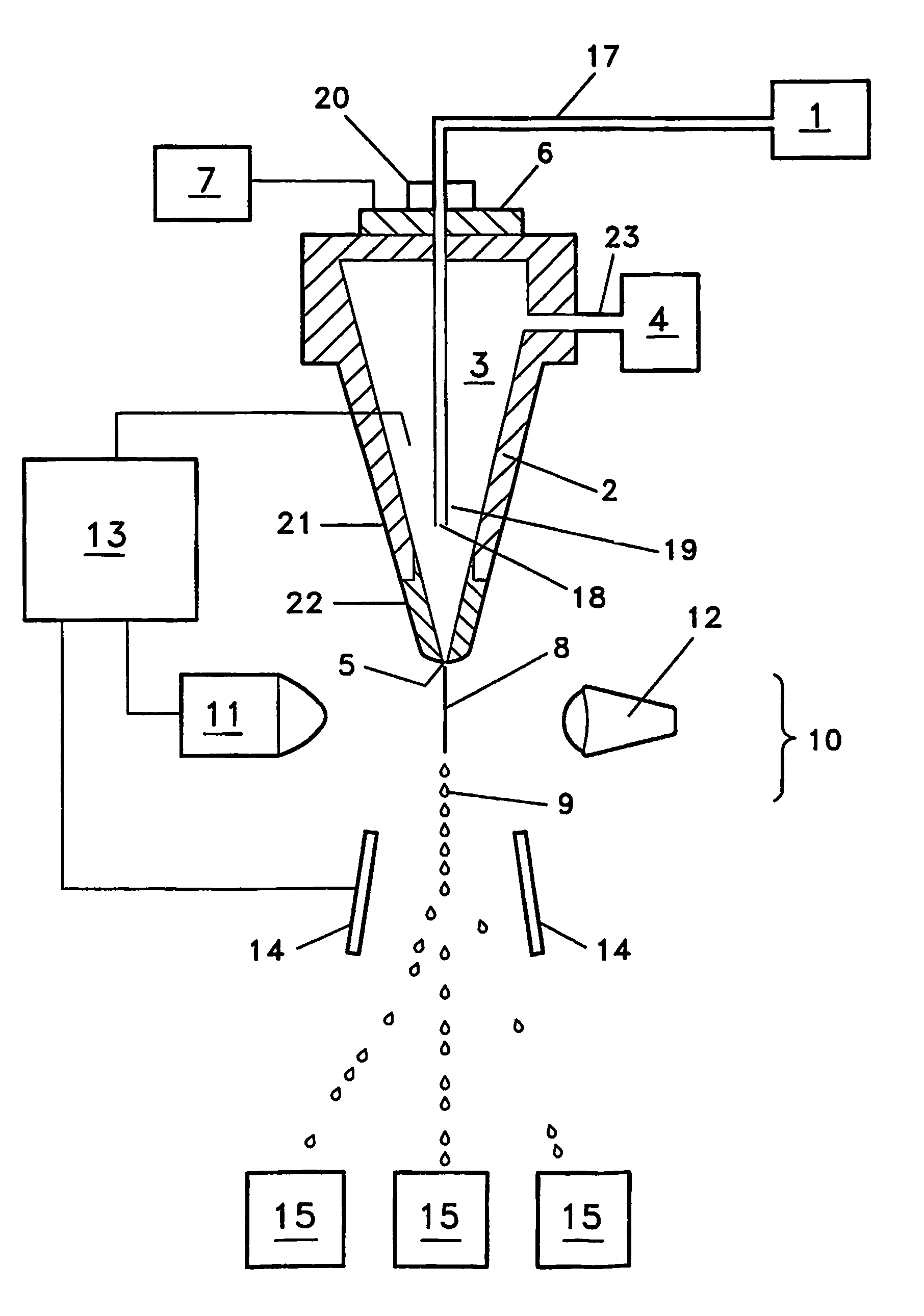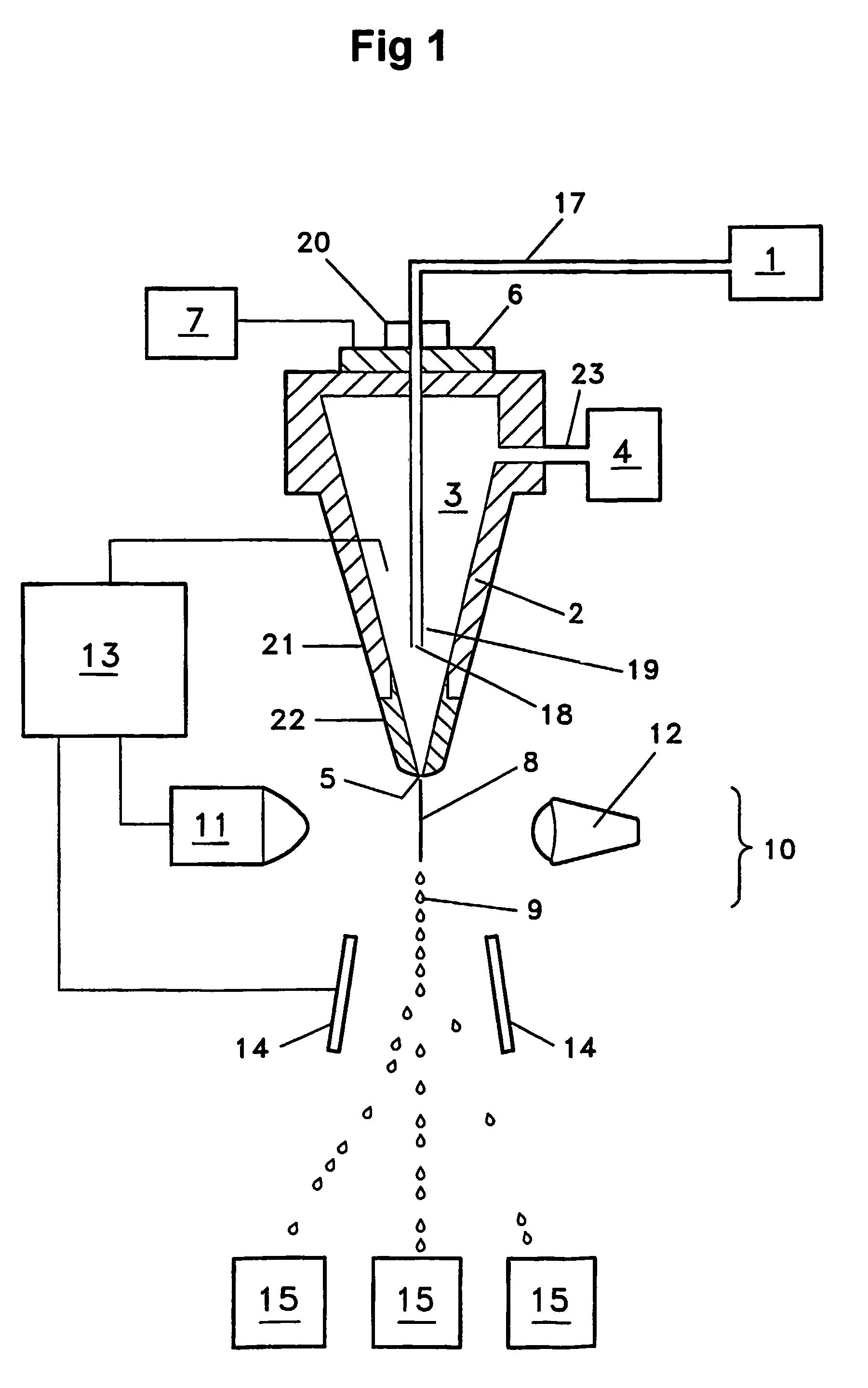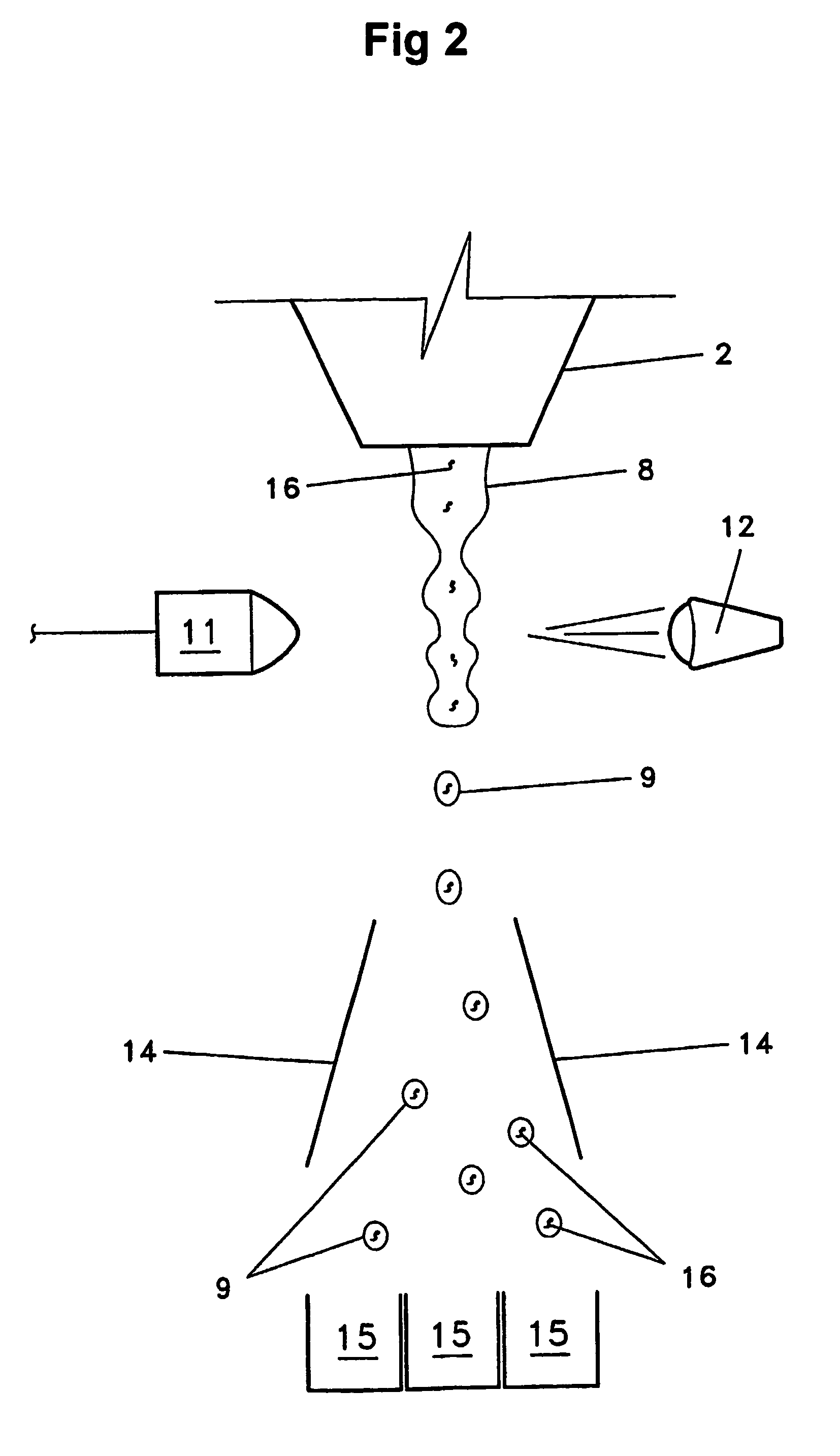High resolution flow cytometer
a flow cytometer, high-resolution technology, applied in the direction of biomass after-treatment, instruments, using mechanical means, etc., can solve the problems of not straight, cell source conduit, and still remain with respect to the resolving capacity of convention flow cytometers, so as to increase the resolution of flow cytometers and increase the homogeneity of isolated populations
- Summary
- Abstract
- Description
- Claims
- Application Information
AI Technical Summary
Benefits of technology
Problems solved by technology
Method used
Image
Examples
Embodiment Construction
[0044]The invention involves a high resolution flow cytometer that can increase resolving power to separate mixed populations of cells, sperm cells, or particles from each other based upon various cell or particle characteristics individually or in combination.
[0045]As such, while particular examples of the invention are provided that describe the invention in the context of separating sperm cells, or separating bovine or equine intact live sperm cells, it should be understood that the enhanced resolution technologies described can have application with respect to separation of various types of flow separable particles, including, but not limited to, cells, spermatozoa, or sperm nuclei, collected, handled, or stored in a variety of ways.
[0046]X-chromosome bearing and Y-chromosome bearing populations of spermatozoa should further be understood to encompass enriched populations of flow separated or sorted spermatozoa obtained from a male of a species of mammal including, but not limit...
PUM
| Property | Measurement | Unit |
|---|---|---|
| length | aaaaa | aaaaa |
| angle | aaaaa | aaaaa |
| angle | aaaaa | aaaaa |
Abstract
Description
Claims
Application Information
 Login to View More
Login to View More - R&D
- Intellectual Property
- Life Sciences
- Materials
- Tech Scout
- Unparalleled Data Quality
- Higher Quality Content
- 60% Fewer Hallucinations
Browse by: Latest US Patents, China's latest patents, Technical Efficacy Thesaurus, Application Domain, Technology Topic, Popular Technical Reports.
© 2025 PatSnap. All rights reserved.Legal|Privacy policy|Modern Slavery Act Transparency Statement|Sitemap|About US| Contact US: help@patsnap.com



